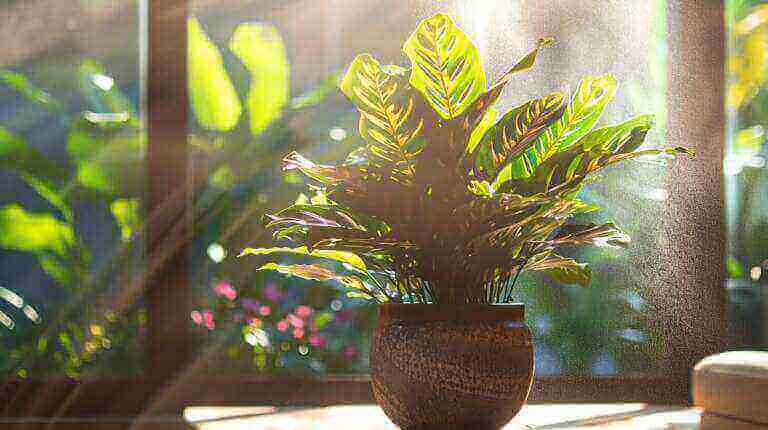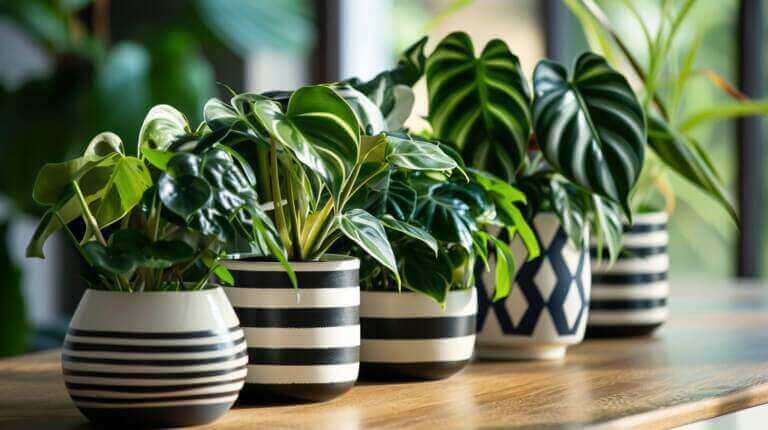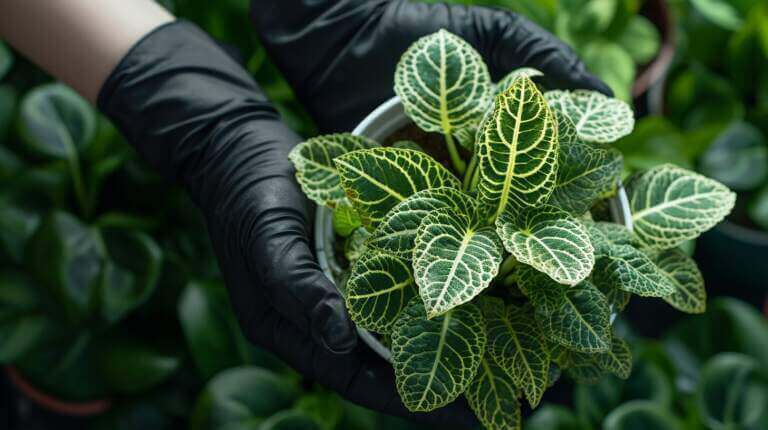What Causes Brown Leaf Tips on Cast Iron Plant(Aspidistra Elatior) Houseplants
Aspidistra, also known as the cast iron plant, is a hardy houseplant that can tolerate neglect and tough conditions. However, brown leaf tips can sometimes appear, indicating an underlying issue. Understanding the causes of brown leaf tips is crucial in providing proper care for your aspidistra plant and maintaining its health.
Key Takeaways:
- Overwatering and underwatering are common causes of brown leaf tips on aspidistra houseplants.
- Exposing the plant to excess light or keeping it in a dark location can lead to browning of the leaves.
- Older foliage naturally turns brown and sheds as the plant focuses on new growth.
- Overfertilizing, drafts, temperature stress, diseases, and pests can also cause brown leaf tips.
- Proper plant care, including appropriate watering, light exposure, and pest management, can prevent brown leaves.
Overwatering and Underwatering Cast Iron Plant
Overwatering and underwatering are two common causes of brown leaf tips on aspidistra houseplants. Overwatering occurs when the plant receives more water than it needs, leading to root rot. This can cause the lower leaves to turn yellow and develop brown tips. On the other hand, underwatering happens when the plant does not receive enough water, causing the leaf tips to brown and some of the older leaves to die.
To prevent overwatering and underwatering, it is crucial to water your aspidistra plant properly. Allow the top half of the soil to dry out before watering again. This helps ensure that the plant’s roots have enough oxygen and prevents the risk of root rot. Additionally, make sure to use well-draining soil and pots with drainage holes to avoid excessive moisture accumulation. Regularly check the moisture level of the soil to determine the optimal watering frequency for your specific plant.
Recognizing the signs of overwatering and underwatering:
- Overwatering: soggy soil, yellowing lower leaves, brown tips, root rot
- Underwatering: dry soil, shriveled leaves, brown tips, older leaves dying
By monitoring the soil moisture and adjusting your watering routine accordingly, you can help your aspidistra plant thrive and prevent brown leaf tips caused by overwatering or underwatering.
| Signs of Overwatering | Signs of Underwatering |
|---|---|
| Soggy soil | Dry soil |
| Yellowing lower leaves | Shriveled leaves |
| Brown tips | Brown tips |
| Root rot | Older leaves dying |
Proper watering techniques are essential for maintaining the health and appearance of your aspidistra plant. By avoiding overwatering and underwatering, you can prevent brown leaf tips and promote optimal growth. Remember to observe the signs of overwatering and underwatering, adjust your watering schedule accordingly, and provide your aspidistra with the right amount of moisture it needs to thrive.
Excess Light and Old Foliage
Exposing aspidistra plants to excess light can lead to brown patches on the leaves. While these plants prefer bright, indirect light, direct sunlight can scorch the leaves, causing them to turn brown and develop unsightly patches. To prevent this, it is important to provide the appropriate light conditions by placing the plant in a location where it receives bright, indirect light without the direct rays of the sun.
In addition to light exposure, it is also important to understand the natural shedding of old foliage in aspidistra plants. As the plant grows, it will naturally shed its older leaves to redirect energy towards the younger foliage. This shedding process can result in browning of the leaves, but it is a normal and natural occurrence. However, if the browning is excessive or if there are brown patches on the newer leaves, it may indicate other underlying issues that need to be addressed.
To ensure the health and vitality of your aspidistra plant, it is important to provide the appropriate light conditions and understand the natural shedding process. By doing so, you can prevent brown patches and promote the growth of healthy, vibrant foliage.
| Excess Light | Old Foliage |
|---|---|
| Exposing aspidistra plants to direct sunlight can scorch the leaves. | Aspidistra plants naturally shed their older leaves to redirect energy towards younger foliage. |
| This can result in brown patches on the leaves. | The shedding process can cause browning of the leaves, but it is a normal occurrence. |
| Provide bright, indirect light for your aspidistra plant to prevent excess light exposure. | Ensure the health and vitality of your aspidistra plant by understanding the natural shedding process. |
Summary:
- Exposing aspidistra plants to direct sunlight can lead to brown patches on the leaves.
- Aspidistra plants naturally shed their older leaves, resulting in browning of the foliage.
- Providing the appropriate light conditions and understanding the natural shedding process is crucial for maintaining the health of your aspidistra plant.
Aspidistra Elatior – Other Causes and Prevention Tips
Aside from overwatering and excess light, there are other factors that can contribute to brown leaf tips on aspidistra houseplants. It is important to be aware of these causes and take preventive measures to ensure the health and beauty of your plant.
Overfertilizing: Applying too much fertilizer can actually harm your aspidistra plant. Excess fertilizer salts can build up in the soil, leading to brown edges and tips on the leaves. To prevent this, carefully follow the instructions on the fertilizer packaging and avoid overfertilizing your plant.
Drafts and Temperature Stress: Aspidistra plants are sensitive to extreme temperature changes. Drafts and fluctuating temperatures can stress the plant, causing the leaves to turn brown. Avoid placing your plant near doors, windows, or vents, where it may be exposed to drafts. Maintain a consistent temperature range, ideally between 65-75°F (18-24°C).
Diseases and Pests: While diseases and pests are less common in aspidistra plants, they can still cause damage and browning of the leaves. Regularly inspect your plant for signs of diseases, such as brown spots or patches, and pests like spider mites, mealybugs, scale, or thrips. If you notice any issues, take appropriate measures such as using organic pest control methods or consulting a professional.
By practicing proper houseplant care and addressing these potential causes, you can prevent brown leaf tips on your aspidistra houseplants. Remember to provide the right amount of water, avoid excess light exposure, be mindful of overfertilizing, maintain a consistent temperature, and regularly inspect your plant for diseases and pests. With proper care, your aspidistra will thrive and showcase its stunning foliage in your home.
FAQ
What are the most common causes of brown leaf tips on aspidistra houseplants?
The most common causes of brown leaf tips on aspidistra houseplants include overwatering or underwatering, excess light, old foliage, acclimation to new conditions, overfertilizing, drafts/temperature stress, diseases, and pests.
How does overwatering or underwatering contribute to brown leaf tips?
Overwatering can lead to root rot, causing lower leaves to turn yellow and develop brown tips. Underwatering can result in insufficient water supply, causing leaf tips to brown and older leaves to die.
Can excess light and old foliage cause brown leaf tips?
Yes, exposing aspidistra plants to direct sunlight can scorch the leaves, causing brown patches, tips, or entire leaves to turn brown. Additionally, shedding of old foliage is a natural process for aspidistra plants, which may turn brown and die.
Are there any other causes of brown leaf tips on aspidistra plants?
Other causes include overfertilizing, drafts or temperature stress, diseases, and pests. Overfertilizing can lead to brown leaf edges and tips, while drafts and extreme temperatures can stress the plant. Diseases and pests can also cause damage to the leaves.
How can I prevent brown leaf tips on aspidistra houseplants?
Proper plant care includes avoiding overwatering or underwatering, providing appropriate light conditions, avoiding overfertilizing, maintaining consistent temperature and humidity, and regularly inspecting the plant for pests and diseases.







